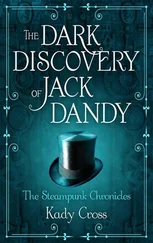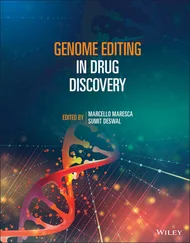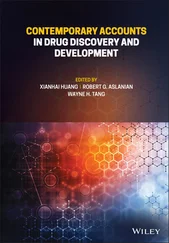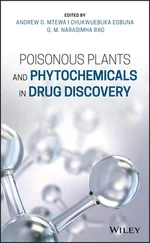These campaigns frequently deliver mediocre hits with micromolar potency and insufficient physicochemical properties, selectivity or ADME parameters. When pursuing licensing negotiations with business development units at universities and pharmaceutical ventures, different opinions on the maturity and valuation of the project may lead to significant disappointment on both sides. While the university side may be convinced that the identified micromolar asset is just ready to go into clinical development, the pharma side may consider the obtained structure as an advanced hit or early lead, at best. This will undoubtedly complicate definition of milestones and payment terms. Here both sides have to openly interact and educate each other.
However, the previously mentioned examples demonstrate the invaluable contributions of academic medicinal chemists to drug discovery. Many new approaches have already been brought to practice. A large number of academically developed drugs is listed in the WHO list of essential drugs. Also financially, it can pay off for a university to pursue drug discovery and try to convert ideas and concepts from fundamental science into clinical practice. The reduced internal research in big pharma calls for new models, and more scientists with experience in the pharmaceutical industry are starting groups in academic settings and importing the knowledge of the drug industry into universities. Specifically, the increased demand for translational research calls for professionalized drug research at academic centers and will make drug discovery a vital and indispensable discipline at academic institutions.
| ADME |
absorption, distribution, metabolism, and excretion |
| AIDS |
acquired immune deficiency syndrome |
| AMP |
adenosine monophosphate |
| BMS |
Bristol Meyers Squibb |
| Ca |
calcium |
| CCNSC |
Cancer Chemotherapy National Service Center |
| CD20 |
cluster of differentiation 20 |
| COVID‐19 |
Coronavirus disease 2019 |
| CTCL |
cutaneous T‐cell lymphoma |
| dL |
deciliter |
| DMSO |
dimethyl sulfoxide |
| DNA |
deoxyribonucleic acid |
| FDA |
Food and Drug Administration |
| FGF |
Fibroblast Growth Factor |
| g |
gram |
| GABA |
γ‐aminobutyric acid |
| GAD |
L-glutamic acid decarboxylase |
| GABA‐AT |
γ‐aminobutyric acid aminotransferase |
| GBF |
Gesellschaft für Biotechnologische Forschung |
| HDAC |
histone deacetylase |
| HIV |
human immunodeficiency virus |
| i Bu |
isobutyl |
| IC 50 |
half maximal inhibitory concentration |
| i Pr |
isopropyl |
| kg |
kilogram |
| K i |
dissociation constant of an inhibitor |
| L |
liter |
| MELC |
murine erythroleukemia cells |
| mg |
milligram |
| mL |
milliliter |
| mmol |
millimol |
| NCE |
new chemical entities |
| NCI |
National Cancer Institute |
| N‐Lost |
nitrogen lost |
| NMR |
nuclear magnetic resonance |
| n Pr |
n ‐Propyl |
| RA |
rheumatoid arthritis |
| rac |
racemic |
| SAHA |
suberoylanilide hydroxamic acid |
| SAR |
structure–activity relationship |
| s Bu |
sec ‐butyl |
| S‐lost |
sulfur‐lost |
| USDA |
US Department of Agriculture |
| WHO |
World Health Organization |
| μg |
microgram |
| μM |
micromolar |
1 1 Iervolino, A. and Urquhart, L. (ed.) (2017). EvaluatePharma World Preview 2017, Outlook to 2022, 10th ed, 19.
2 2 Philippidis, A. (2019). Genetic Engineering & Biotechnology News, vol. 2020. Mary Ann Liebert, Inc. Publishers.
3 3 Mullard, A. (2020). 2019 FDA drug approvals. Nat. Rev. Drug Discovery 19: 79–84.
4 4 Stevens, A.J., Jensen, J.J., Wyller, K. et al. (2011). The role of public‐sector research in the discovery of drugs and vaccines. N. Engl. J. Med. 364: 535–541.
5 5 Nayak, R.K., Avorn, J., and Kesselheim, A.S. (2019). Public sector financial support for late stage discovery of new drugs in the United States: cohort study. BMJ 367: l5766.
6 6 Edwards, J.C.W., Cambridge, G., and Abrahams, V.M. (1999). Do self‐perpetuating B lymphocytes drive human autoimmune disease? Immunology 97: 188–196.
7 7 Protheroe, A., Edwards, J.C.W., Simmons, A. et al. (1999). Remission of inflammatory arthropathy in association with anti‐CD20 therapy for non‐Hodgkin's lymphoma. Rheumatology 38: 1150–1152.
8 8 Edwards, J.C.W., Szczepanski, L., Szechinski, J. et al. (2004). Efficacy of B‐cell‐targeted therapy with rituximab in patients with rheumatoid arthritis. N. Engl. J. Med. 350: 2572–2581.
9 9 (a) Sheskin, J. (1965). Thalidomide in the treatment of lepra reactions. Clin. Pharmacol. Ther. 6: 303–306.(b) Sheskin, J. (1980). The treatment of lepra reaction in lepromatous leprosy – 15 years experience with thalidomide. Int. J. Dermatol. 19: 318–322.
10 10 D'Amato, R.J., Loughnan, M.S., Flynn, E., and Folkman, J. (1994). Thalidomide is an inhibitor of angiogenesis. Proc. Natl. Acad. Sci. U. S. A. 91: 4082–4085.
11 11 Singhal, S., Mehta, J., Desikan, R. et al. (1999). Antitumor activity of thalidomide in refractory multiple myeloma. N. Engl. J. Med. 341: 1565–1571.
12 12 Olson, K.B., Hall, T.C., Horton, J. et al. (1965). Thalidomide (N‐phthaloylglutamimide) in treatment of advanced cancer. Clin. Pharmacol. Ther. 6: 292.
13 13 Krumbhaar, E.B. and Krumbhaar, H.D. (1919). The blood and bone marrow in yelloe cross gas (mustard gas) poisoning: changes produced in the bone marrow of fatal cases. J. Med. Res. 40: 497–508. 493.
14 14 Gilman, A. and Philips, F.S. (1946). The biological actions and therapeutic applications of the B‐chloroethyl amines and sulfides. Science 103: 409–415.
15 15 Fenn, J.E. and Udelsman, R. (2011). First use of intravenous chemotherapy cancer treatment: rectifying the record. J. Am. Coll. Surgeons 212: 413–417.
16 16 Goodman, L.S., Wintrobe, M.M. et al. (1946). Nitrogen mustard therapy; use of methyl‐bis (beta‐chloroethyl) amine hydrochloride and tris (beta‐chloroethyl) amine hydrochloride for Hodgkin's disease, lymphosarcoma, leukemia and certain allied and miscellaneous disorders. J. Am. Med. Assoc. 132: 126–132.
17 17 (a) DeVita, V.T. Jr. and Chu, E. (2008). A history of cancer chemotherapy. Cancer Res. 68: 8643–8653.(b) Verrill, M. (2009). Chemotherapy for early‐stage breast cancer: a brief history. Br. J. Cancer 101 (Suppl 1): S2–S5.(c) Galmarini, D., Galmarini, C.M., and Galmarini, F.C. (2012). Cancer chemotherapy: a critical analysis of its 60 years of history. Crit. Rev. Oncol. Hematol. 84: 181–199.
18 18 (a) Silverman, R.B. (2016). Basic science to blockbuster drug: invention of Pregabalin (Lyrica (R)). Technol. Innov. 17: 153–158.(b) Silverman, R.B. (2008). From basic science to blockbuster drug: the discovery of Lyrica. Angew. Chem. Int. Ed. 47: 3500–3504.
19 19 Krnjevic, K. (1970). Glutamate and gamma‐aminobutyric acid in brain. Nature 228: 119.
20 20 Baxter, C.F. and Roberts, E. (1961). Elevation of gamma‐aminobutyric acid in brain – selective inhibition of gamma‐aminobutyric‐alpha‐ketoglutaric acid transaminase. J. Biolumin. Chemilumin. 236: 3287.
Читать дальше












